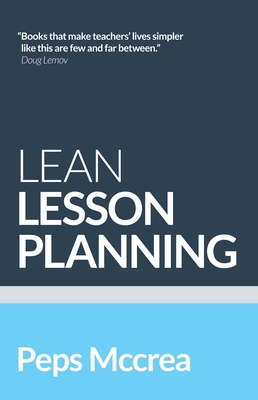
Catmull, Edwin
product information
description
4Las fórmulas para crear entornos creativos de la mano del fundador y presidente de los estudios Disney-Pixar Studios. Creatividad, S.A. es un libro para profesionales que deseen llevar a sus equipos a cumbres más altas, un manual para cualquier lector que valore la originalidad y el primer viaje al centro neurálgico de Pixar Animation: a sus reuniones, sus evaluaciones de cierre de proyecto y las sesiones del Braintrust de las que nacieron algunas de las películas más exitosas de la historia del cine. Es, en el fondo, un libro acerca de cómo se construye una cultura creativa, pero también, como afirma su autor, «un reflejo de las ideas que creo que hacen aflorar lo mejor que llevamos dentro. Cuando Ed Catmull era joven tenía un sueño: hacer la primera película de animación por ordenador. Persiguió este sueño como estudiante en la Universidad de Utah, y se asoció con George Lucas, en una colaboración que, indirectamente, le llevó a fundar Pixar con Steve Jobs y John Lasseter en 1986. El ingrediente esencial en el éxito de Pixar está en su entorno único, que Catmull y sus compañeros consiguieron forjar, basado en principios que protegen el proceso creativo y que desafían las ideas establecidas, como por ejemplo: - La responsabilidad de un directivo no es prevenir riesgos; su trabajo es dar la seguridad para que los demás los asuman. - El coste de prevenir errores con frecuencia es superior al de subsanarlos. - La estructura de comunicación de una empresa no debe ser el reflejo de su estructura organizativa; todo el equipo debe ser capaz de interrelacionarse, independientemente de su cargo y sus funciones. - No dé por sentado que el consenso general generará cambio; se requiere de mucha energía para mover un grupo, aunque todos sus miembros estén comprometidos con el proyecto. ENGLISH DESCRIPTION From Ed Catmull, co-founder (with Steve Jobs and John Lasseter) of Pixar Animation Studios, comes an incisive book about creativity in business--sure to appeal to readers of Daniel Pink, Tom Peters, and Chip and Dan Heath.
Creativity, Inc. is a book for managers who want to lead their employees to new heights, a manual for anyone who strives for originality, and the first-ever, all-access trip into the nerve center of Pixar Animation--into the meetings, postmortems, and "Braintrust" sessions where some of the most successful films in history are made. It is, at heart, a book about how to build a creative culture--but it is also, as Pixar co-founder and president Ed Catmull writes, "an expression of the ideas that I believe make the best in us possible." For nearly twenty years, Pixar has dominated the world of animation, producing such beloved films as the Toy Story trilogy, Monsters, Inc., Finding Nemo, The Incredibles, Up, and WALL-E, which have gone on to set box-office records and garner thirty Academy Awards. The joyousness of the storytelling, the inventive plots, the emotional authenticity: In some ways, Pixar movies are an object lesson in what creativity really is. Here, in this book, Catmull reveals the ideals and techniques that have made Pixar so widely admired--and so profitable. As a young man, Ed Catmull had a dream: to make the first computer-animated movie. He nurtured that dream as a Ph.D. student at the University of Utah, where many computer science pioneers got their start, and then forged a partnership with George Lucas that led, indirectly, to his founding Pixar with Steve Jobs and John Lasseter in 1986. Nine years later, Toy Story was released, changing animation forever. The essential ingredient in that movie's success--and in the thirteen movies that followed--was the unique environment that Catmull and his colleagues built at Pixar, based on philosophies that protect the creative process and defy convention, such as: - Give a good idea to a mediocre team, and they will screw it up. But give a mediocre idea to a great team, and they will either fix it or come up with something better.
- If you don't strive to uncover what is unseen and understand its nature, you will be ill prepared to lead.
- It's not the manager's job to prevent risks. It's the manager's job to make it safe for others to take them.
- The cost of preventing errors is often far greater than the cost of fixing them.
- A company's communication structure should not mirror its organizational structure. Everybody should be able to talk to anybody.
- Do not assume that general agreement will lead to change--it takes substantial energy to move a group, even when all are on board.
Creativity, Inc. is a book for managers who want to lead their employees to new heights, a manual for anyone who strives for originality, and the first-ever, all-access trip into the nerve center of Pixar Animation--into the meetings, postmortems, and "Braintrust" sessions where some of the most successful films in history are made. It is, at heart, a book about how to build a creative culture--but it is also, as Pixar co-founder and president Ed Catmull writes, "an expression of the ideas that I believe make the best in us possible." For nearly twenty years, Pixar has dominated the world of animation, producing such beloved films as the Toy Story trilogy, Monsters, Inc., Finding Nemo, The Incredibles, Up, and WALL-E, which have gone on to set box-office records and garner thirty Academy Awards. The joyousness of the storytelling, the inventive plots, the emotional authenticity: In some ways, Pixar movies are an object lesson in what creativity really is. Here, in this book, Catmull reveals the ideals and techniques that have made Pixar so widely admired--and so profitable. As a young man, Ed Catmull had a dream: to make the first computer-animated movie. He nurtured that dream as a Ph.D. student at the University of Utah, where many computer science pioneers got their start, and then forged a partnership with George Lucas that led, indirectly, to his founding Pixar with Steve Jobs and John Lasseter in 1986. Nine years later, Toy Story was released, changing animation forever. The essential ingredient in that movie's success--and in the thirteen movies that followed--was the unique environment that Catmull and his colleagues built at Pixar, based on philosophies that protect the creative process and defy convention, such as: - Give a good idea to a mediocre team, and they will screw it up. But give a mediocre idea to a great team, and they will either fix it or come up with something better.
- If you don't strive to uncover what is unseen and understand its nature, you will be ill prepared to lead.
- It's not the manager's job to prevent risks. It's the manager's job to make it safe for others to take them.
- The cost of preventing errors is often far greater than the cost of fixing them.
- A company's communication structure should not mirror its organizational structure. Everybody should be able to talk to anybody.
- Do not assume that general agreement will lead to change--it takes substantial energy to move a group, even when all are on board.
member goods
No member items were found under this heading.
listens & views

VIRTUOSO: VIVALDI: GLORIA STABAT MATER
by PRESTON / HOGWOOD / ACADEMY OF ANCIENT M
COMPACT DISCout of stock
$5.49
Return Policy
All sales are final
Shipping
No special shipping considerations available.
Shipping fees determined at checkout.






